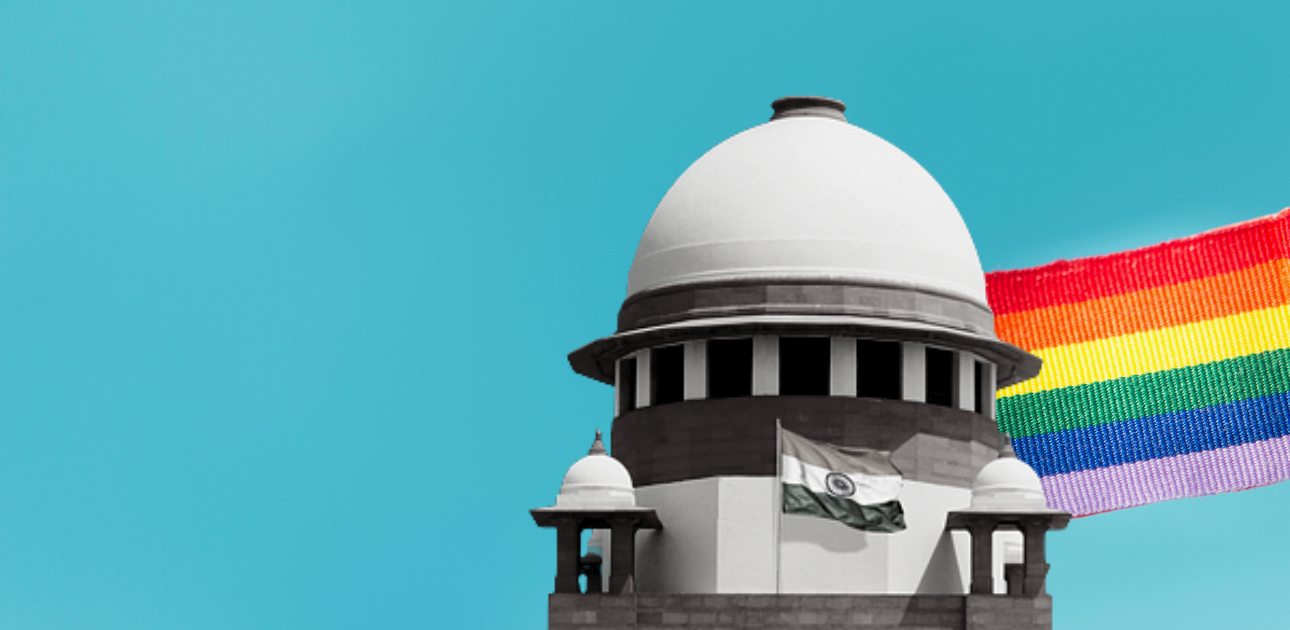In his letter to Justice Hima Kohli, Rohin Bhatt, a queer lawyer, points out the infrastructural problems faced by queer lawyers practising in the Supreme Court and the need for an inclusive workspace.
——
ON March 22, Rohin Bhatt, a queer, non-binary lawyer practising at the Supreme Court, wrote a letter to Justice Hima Kohli, Chairperson of the Supreme Court Gender Sensitisation and Internal Complaints Committee, on the need for infrastructural inclusivity at the Supreme Court and queer representation in the committee. Bhatt laid emphasis on ensuring an infrastructure that enables queer lawyers to practise in an affirming manner.
Pursuant to The Gender Sensitisation & Sexual Harassment of Women at the Supreme Court of India (Prevention, Prohibition & Redressal) Regulations, 2013, the committee was formed to sensitise the public to gender issues and to address any complaints made regarding sexual harassment at the Supreme Court precincts. The letter notes that the current committee, constituted by the Chief Justice of India (CJI), consists of 11 members (in addition to the Chairperson), comprising representatives of the Supreme Court Bar Association, the Supreme Court Advocate-on-Record Association and Supreme Court Bar Clerks’ Association, apart from nominees of the CJI.
In his letter, Bhatt highlighted the lack of representation of transgender persons on the membership of the Committee. He also mentions the need for a person on the committee to advocate for queer representation.
On the infrastructural difficulties faced by queer lawyers, Bhatt pointed out that the Supreme Court premises lack a gender-neutral restroom. Without such inclusion, transgender, non-binary and gender non-confirming lawyers often find themselves without the basic facility of a restroom, Bhatt stated.
Bhatt further pointed out in his letter the problematic practice whereby the prefixes of queer lawyers are often changed from the gender-neutral prefix of ‘Mx.’ to ‘Ms.’, or their appearances are not recorded in high courts. He highlighted that he had previously raised the concern on the use of pronouns by writing to CJI Dr. D.Y. Chandrachud and requesting him to include a separate column for pronouns on the appearance sheet to ensure that lawyers are not misgendered. However, the new online portal fails to include a pronoun column for advocates, he noted.
Bhatt emphasised that with an increasing number of lawyers belonging to the LGBTQIA+ community joining the Bar, it is essential to provide them with infrastructural support. “To envision a truly inclusive bar for the future, the Supreme Court must revisit the modes of organizational and spatial development that successfully resist homophobia/transphobia and their intersections with misogyny, casteism, racism, cultural chauvinism, and xenophobia,” he wrote.
In sum, Bhatt urges Justice Kohli to, firstly, broaden the scope of the committee from being a ‘Gender Sensitisation and Internal Complaints Committee’ to a ‘Gender and Sexuality Sensitisation and Internal Complaints Committee’. It must be noted that presently, the 2013 Regulations provide for sensitisation against discrimination only on the basis of gender.
Secondly, he raises the plea to arrange for gender-neutral restrooms on every floor of the Supreme Court where there are restrooms for men and women. Thirdly, he urges Justice Kohli to appoint a member from the Bar belonging to the LGBTQIA+ community to the committee. Fourthly, he reiterates his plea to add a new column to the online appearance platform for pronouns.
On the impact that the changes, if implemented, are likely to have on queer lawyers, Bhatt shares with The Leaflet, “It will turn the Supreme Court into a more inclusive workspace for those of us that are queer.” He adds, “But at its root, this issue is about basic infrastructural support and an advocacy program to combat rampant homophobia that is prevalent in the system.”


